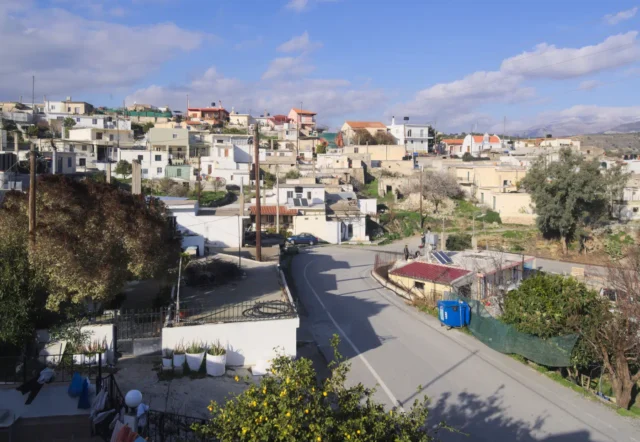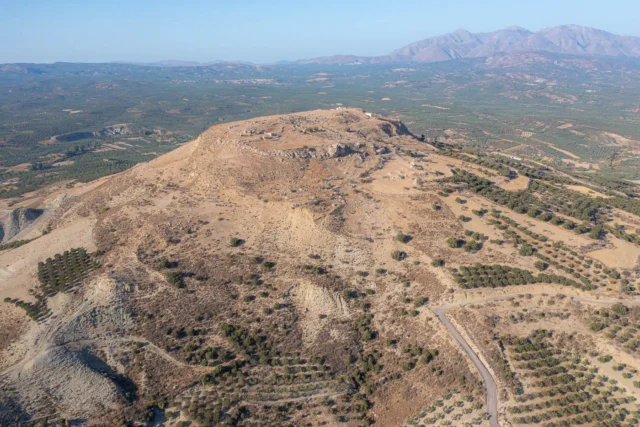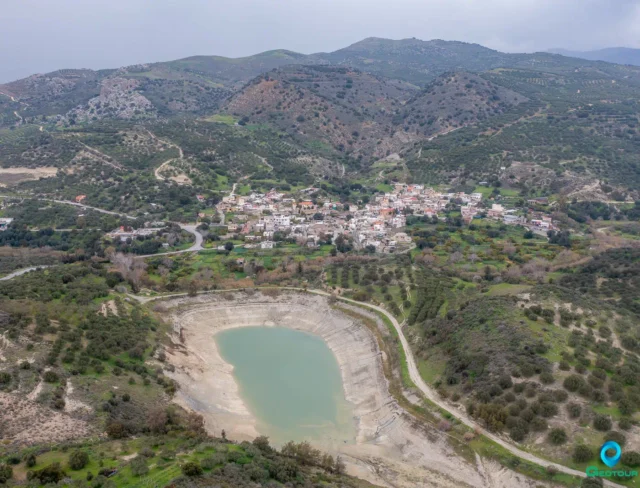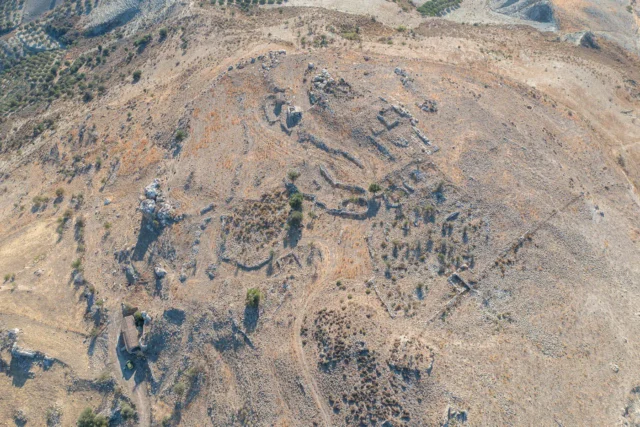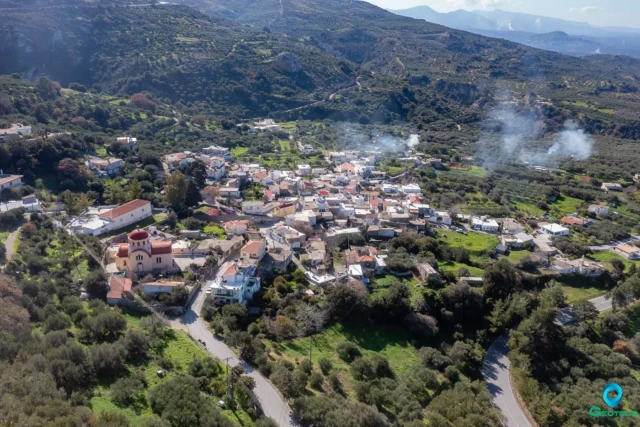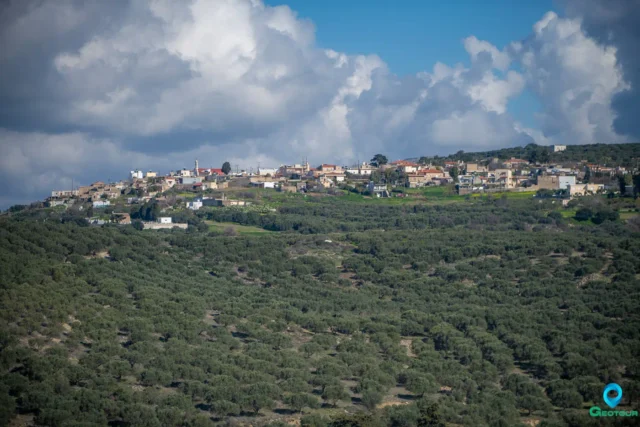Skinias is a village and seat of the Skinias Municipality in the Heraklion Regional Unit, Crete, Greece. It is part of the Monofatsi province.
Location
The village is situated on the eastern slope of a hill, 51.4 km from Heraklion.
Etymology
The name ‘Skinias’ is a phytonym, derived from the shrub Pistacia lentiscus, also known as ‘skinos’ in Crete. The name signifies ‘the place where skinos abounds’, similar to other phytonyms like Platanias and Prinias. Local tradition holds that a Pistacia lentiscus shrub grew on the roof of the village church (Agios Antonios). The shrub would wither whenever unpleasant events occurred with the Turks, as if it shared in the residents’ grief. After the events passed, the plant would regain its vitality.
History
Archaeological Significance
The wider area is of archaeological interest. Lagouta, a nearby settlement, dates back to the Minoan era and has endured numerous invasions. Skinias is located near the ancient city of Priansos. Archaeological findings, including a double axe from the Minoan period, a Taurus zodiac sign and the head of a female figurine from the Hellenistic period, and artifacts from the Byzantine period, indicate traces of civilization dating back to Minoan times.
Historical References
- The village is first documented in records from the Ducal Archive of Chandax in 1373.
- In 1583, it appears as ‘Schinea’ in the Venetian census, with 76 inhabitants and belonging to the Belvedere province.
- In 1867, Skinias was incorporated into the Monofatsi province by an organic law.
- During the Turkish occupation, it was inhabited only by Christians (222 in 1881), while Lagouta had 200 Turks and Vakiotes had 46 Turks and 21 Christians, according to the same census.
- Lagouta is first mentioned in a notarial document in 1271 and as ‘Lagouta’ in 1373. In 1583, it is listed as ‘Laguta’ with 107 inhabitants in the Belvedere province. ‘Vakiotes’ is also listed with 59 inhabitants in 1583.
- Vakiotes is found in documents from the 14th century.
- The old well southeast of Lagouta dates back to the Arab conquest.
- The old elementary school in Lagouta was built in 1931.
Economy
The inhabitants of Skinias are mainly farmers, producing olive oil, cereals, and raisins.
Culture and Traditions
The village church, dedicated to Agios Antonios (Saint Anthony), is a focal point of the community. Local tradition links the church to a Pistacia lentiscus shrub that grew on its roof, believed to have reflected the community’s emotional state during the Turkish occupation.
Family and Social Life
Skinias has a close-knit community, with families primarily engaged in agriculture. The village has a νηπιαγωγείο (kindergarten), a Δημοτικό Σχολείο (primary school), a γυμνάσιο (gymnasium), and a cultural association, indicating a focus on education and community engagement.
Infrastructure
The village has a νηπιαγωγείο (kindergarten), a Δημοτικό Σχολείο (primary school), a γυμνάσιο (gymnasium), a police station, a regional medical office, and a local football team founded in 1980, which competes in the B’ amateur category of E.P.S. Heraklion.
Settlement: Key Points
- Historical References: First documented in 1373, Venetian census in 1583, incorporated into Monofatsi province in 1867.
- Location: Eastern slope of a hill, 51.4 km from Heraklion, Crete, Greece.
- Historical Significance: Located near the ancient city of Priansos, archaeological findings date back to Minoan times.
- Population Data:
Year |
Population |
Notes |
|---|---|---|
1583 |
76 |
as Schinea |
1881 |
222 |
Christians |
1900 |
321 |
|
1928 |
448 |
|
1981 |
795 |
|
1991 |
681 |
|
2001 |
611 |
|
2011 |
456 |
|
2021 |
407 |













